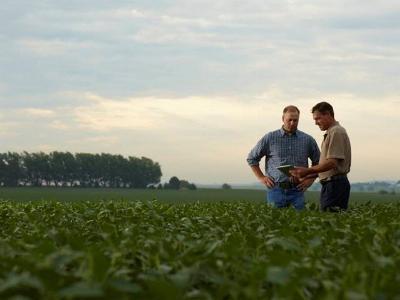4 Technologies That Will Usher In Next Generation Farming

Technology that promises to unleash agricultural productivity is here today. The combination punch of advanced mathematics, automation, advancements in sensor systems and next-generation plant breeding are setting the stage for the next Green Revolution, which is what we need to ensure a sustainable future.
Forget about the days when farmers guessed the best time to plant by looking up a forecast in the Farmer’s Almanac. Next-generation farms are putting science and technology to work to deliver a step change in yields , growing more from less. Here are four of the most exciting developments to watch out for in 2016.
1. The mathematics revolution
We’re long overdue for a mathematical revolution in agriculture. The power of advanced mathematics is boosting farm productivity made accessible by the processing capabilities in the latest generation of computing hardware and software. For example, farmers can now know the best time to plant crops by looking at historical data and using simulation models to make informed choices based on current conditions, rather than guesswork. Plant breeders also take advantage of advanced mathematics to identify crop varieties with higher yields and other desirable traits. Finally, the mathematical revolution can help schedule everything from the harvest to loading trucks in a way that ensures fresh crops make it to the market. In other words, the mathematics revolution brings to the entire agricultural supply chain the power to make informed decisions about using natural resources wisely.
2. The sensing revolution
The mathematics revolution can only deliver these benefits if the simulation models are fed high-quality data. That need is being met by advanced sensor technologies that are enabling a real-time understanding of what’s happening on the modern farm, unlike anything seen in the past. The latest equipment takes advantage of networks of smart sensors that monitor the health of the soil along with a plant’s water and nitrogen needs. Knowing precisely how much water is needed helps optimize irrigation, conserve scarce resources and maximize yields. Getting the amount of nitrogen and water right is absolutely essential to preserving the environment.
For livestock, collars equipped with RFID, biometric sensors and GPS combine to allow real-time monitoring of the location and health of farm animals, ensuring that ranchers and farmers will be able to respond quickly to any potential problem.
3. Putting it together with automation
Automation works hand-in-hand with the advanced mathematics and high-resolution sensing to ensure that planting, harvesting, irrigating and the application of other inputs are performed with absolute precision. Agricultural robots, or agbots, are automating tedious tasks. Combine hundreds of these energy-efficient agbots and you end up with robotic farm swarms, which work in a network to monitor conditions and harvest crops without the need for human intervention, which means fewer farm injuries and less environmental waste. Such projects are currently in testing stages.
4. Next generation plant breeding for corn
Growing plants in a smarter way represents only half of the task agriculture faces. It’s just as important to breed better plants. That’s why perhaps one of the most exciting advances to watch for is the development of corn hybrids selected and adapted to thrive when planted in high densities. This makes possible a step change in yield delivered per acre.
Higher productivity in agriculture isn’t a luxury, it’s a necessity. The world’s population will grow by two billion in the decades ahead. We can only feed all of these people if we are smart about how we boost yields in our industry. Paying attention to the environment, biodiversity and the needs of smallholder farmers is key to doing this in the right way.
As these advances continue to develop in 2016, it will be clear that the future has never been brighter in agriculture
Có thể bạn quan tâm
 Seafood exports set to top $7b this year
Seafood exports set to top $7b this year The country’s seafood exports are expected to reach US$7 billion this year, a year-on-year increase of 5.5 per cent, according to the Việt Nam Association
 Thin demand drives Vietnam's Jan-Nov rice exports down 25 percent
Thin demand drives Vietnam's Jan-Nov rice exports down 25 percent Oversupply on the global rice market has forced Vietnam to revise down its annual target twice this year
Export volume, including sales across the border to top buyer China, is projected to fall by more than 2 million tons from last year’s 6.56 million tons